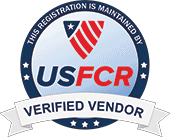The World Health Organization (WHO) defines tetanus as “an acute infectious disease caused by spores of the bacterium Clostridium tetani.” When most of us think of tetanus, the first mental image we get is of stepping on a rusty nail. There are so many different ways that one can come in contact with this bacterium. According to The World Health Organization, spores are also found in soil, ash, and in the intestinal tracts of animals and humans.
Related: Dogs on Customer Property: Keeping Technicians Safe
Because of its prominence, it’s vital for anyone who may come in contact with this bacterium to understand more about the disease. Especially your utility technicians. Below, you’ll find everything you need to know. We’ve included some tips to stress that can help with tetanus prevention for your utility technicians.
The connection between rust and tetanus
As we mentioned earlier, most people correlate tetanus with a rusty object like a nail or barbed wire. And while there is a definite connection between rust and the disease, rust is not what actually causes the problem. The biggest driver in tetanus is ordinary soil that becomes trapped in the porous surface of rust. Meaning rust only provides the avenue in which the bacterium can be transferred.
It’s important to know that Clostridium tetani is dormant and does not become active until it enters the body. The result is the production of a neurotoxin called tetanospasmin. It can be harmful to nerve tissue and cause muscle spasms like lockjaw, fever, rapid heart rate, and difficulty swallowing.
Read Next:
Leak Detection Part One: Water
Leak Detection Part Two: Gas
How dangerous is tetanus?
People of all ages can get tetanus. The groups who suffer severe reactions include newborn babies, pregnant women, and the elderly. WHO reports that 34,000 newborns died from neonatal tetanus in 2015. A number dramatically less (96%) than what it was in 1988. 787,000 babies died from the disease in their first month of living.
Related: Rust Overview & Prevention
The tetanus vaccine has been in use for about a century. In more recent years though, advanced vaccines have become available. In both adults and children, these vaccines cover several illnesses, including tetanus and pertussis (whooping cough) in one dose. Tetanus most occurs in parts of the world where vaccination use is low.
Related: Corrosion Surveys: Why Are They Important?
Prevention against tetanus
Generally speaking, practicing good hygiene is critical for utility technicians. Especially those who are actively digging in the soil or handling wastewater. Additionally, both the WHO and CDC suggest immunizations as a means of prevention against tetanus. On the Centers for Disease Control and Prevention (CDC) website, you’ll find information regarding the tetanus vaccine.
First aid is crucial for any technicians who come into contact with rusty objects, as they may carry the bacterium. Wash effected area(s) with soap and apply gentle pressure with a clean cloth to help slow or stop bleeding. Be sure to remove any debris in the wound with sanitized tweezers before applying antiseptic ointment to the area. Finally, dress the wound with a clean bandage to shield it from any other harmful contaminants entering.
Related: On Board With a Safety Culture? 5 Tips To Make it Stick
Utility Partners of America recognizes what it takes to be a utility tech
As someone that has partnered with utility companies and energy co-ops for decades, we understand and appreciate what life is like for your techs. That’s why we help companies like yours with education, processes, and partnerships that make their lives easier. If you’re interested in learning more about how we can help you, contact us today.





